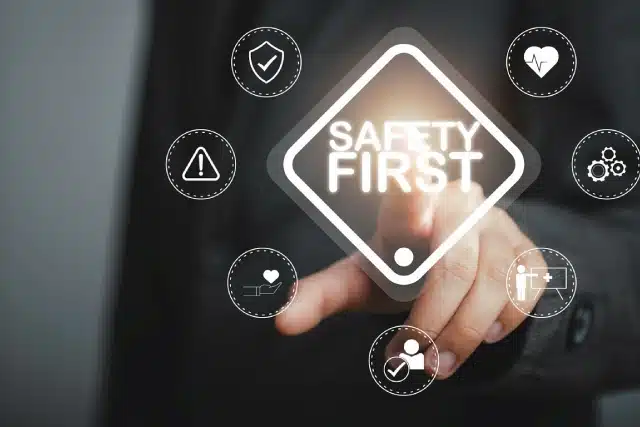In countless industries — from construction and mining to manufacturing and oil and gas — workers face hidden dangers that often go unnoticed until it’s too late. One such hazard is silica dust, a fine particulate matter that, when inhaled, can cause severe and sometimes fatal health conditions. Navigating the dangers of silica dust exposure is crucial to maintaining a safe and healthy work environment. Understanding the risks, implementing protective measures, and incorporating comprehensive safety training can dramatically reduce the threat.
What Is Silica Dust?
Silica, or silicon dioxide, is a common mineral in materials like sand, stone, concrete, and brick. When these materials are cut, drilled, ground, or otherwise disturbed, they release tiny crystalline silica particles into the air. These airborne particles are often so small that they are invisible to the naked eye but can be inhaled deep into the lungs.
The most dangerous form is respirable crystalline silica, which can bypass the body’s natural defenses and embed itself in lung tissue. Prolonged or intense exposure can lead to debilitating diseases such as silicosis, lung cancer, chronic obstructive pulmonary disease (COPD), and kidney disease.
The Scope of the Problem
According to the Occupational Safety and Health Administration (OSHA), approximately 2.3 million workers in the United States are exposed to silica dust annually. Construction workers, particularly those engaged in tasks like sawing concrete, jackhammering, or sandblasting, are among the most at risk. However, exposure is not limited to construction; industries such as manufacturing, shipbuilding, and specific agricultural sectors also face risks.
The latency period between exposure and disease onset can range from a few years to several decades, meaning the actual impact of today’s workplace conditions may not become apparent until much later. Early symptoms — such as coughing, fatigue, and shortness of breath — are often mistaken for less serious illnesses, allowing the disease to progress undetected. Well-designed safety training programs play a crucial role in bridging this knowledge gap, enabling workers to recognize early symptoms and understand proper protective measures.
Health Effects of Silica Exposure
Silicosis is the most well-known consequence of silica dust inhalation. It is an incurable lung disease caused by the buildup of silica particles in the lungs, leading to inflammation and scarring. Silicosis comes in three forms:
- Chronic silicosis develops after 10 or more years of low to moderate exposure.
- Accelerated silicosis develops within 5–10 years of high exposure.
- Acute silicosis is a rare but severe form that can occur within a few weeks to 5 years of extremely high exposure.
Other health effects include:
- Lung cancer: Silica dust is classified as a human carcinogen.
- Chronic Obstructive Pulmonary Disease (COPD): Long-term exposure can cause permanent airflow obstruction.
- Kidney disease: Studies have linked silica exposure to kidney damage and renal failure.
- Autoimmune diseases: Exposure has been linked to conditions such as rheumatoid arthritis and lupus.
These health consequences underscore the importance of ongoing safety training and proactive exposure control in protecting workers’ health over the long term.
Regulatory Standards and Employer Responsibilities
OSHA’s Respirable Crystalline Silica Standard sets strict limits on worker exposure.
Employers are required to:
- Assess exposure to silica dust.
- Implement engineering and work practice controls to limit exposure, such as water suppression and local exhaust ventilation.
- Provide respiratory protection when controls cannot adequately reduce exposure.
- Develop a written exposure control plan and designate a competent person to oversee its implementation.
- Offer medical exams (including chest X-rays and lung function tests) for workers exposed above the action level.
- Train workers on the health hazards associated with silica and on ways to limit exposure.
Effective safety training is not just a regulatory requirement; it is a foundational element in building a resilient safety culture.
Effective Strategies for Reducing Silica Exposure
Navigating silica hazards requires a layered approach combining engineering controls, administrative practices, and personal protective equipment (PPE).
1. Written Control Plan. Establish and implement a written exposure control plan that identifies tasks that involve exposure and methods used to protect workers, including procedures to restrict access to work areas where high exposures may occur. The most effective way to reduce silica dust is to control it at the source. Key methods include wet cutting, where applying water at the point of dust generation can significantly reduce the number of airborne particles. Local exhaust ventilation (LEV): Captures dust at or near the source before it can become airborne. Isolation: Using enclosed cabs or barriers to separate workers from dust-generating activities.
2. Work Practice Controls. Training workers on proper techniques can help minimize dust generation. Use equipment and tools specifically designed for dust suppression. Avoid dry sweeping or using compressed air to clean work areas; instead, use HEPA-filtered vacuums or wet methods. Limit the number of workers exposed to dust-producing tasks.
3. Personal Protective Equipment (PPE). When engineering and work practice controls cannot sufficiently reduce exposure, employers must provide PPE:
Respirators: Properly fitted respirators approved for silica exposure must be worn during tasks that pose a high risk of exposure.
Protective clothing: Disposable or washable work clothes can prevent dust from being carried away from the worksite.
4. Medical Surveillance
Workers exposed to respirable crystalline silica at or above the action level for 30 or more days per year must be offered regular health screenings. Offer medical exams, including chest X-rays and lung function tests, every three years. Keep records of exposure measurements, objective data, and medical exams. Early detection of silica-related health issues can lead to better health outcomes and may prevent disease progression.
5. Training and Communication
Training workers to recognize tasks that may expose them to silica dust and teaching proper work practices is crucial. Safety training empowers employees to identify risks in real-time. An effective training program includes: Information on health hazards, details about the silica rule, exposure control methods, and hands-on demonstrations of proper tool usage and PPE maintenance. Train workers on work operations that result in silica exposure and ways to limit exposure.
Building a Culture of Safety
Controlling silica dust exposure is not just about compliance — it’s about fostering a workplace culture where safety is everyone’s responsibility. Supervisors and safety managers must lead by example, emphasizing hazard awareness, encouraging workers to speak up about unsafe conditions, and consistently reinforcing safe work practices. Regular safety meetings, toolbox talks focused on silica hazards, and clear, consistent communication are vital to maintaining vigilance against this invisible threat.
Silica dust may be microscopic, but its impact on worker health can be monumental. By understanding the risks, adhering to regulations, and implementing robust safety practices, employers can create workplaces where workers are protected from this silent danger. Navigating the dangers of silica dust exposure is not a one-time effort — it requires ongoing attention, training, and commitment to ensuring that every worker returns home safely, day after day.
At Safety Consulting Specialists, we’re committed to helping you create a safer jobsite—especially when it comes to hazards like silica dust. With 25 years of experience in construction safety, we offer expert consulting, comprehensive safety training programs, and thorough safety audits to ensure your team stays protected and compliant. Call us today at (919) 417-2139 to take the next step toward a safer work environment. Our experienced team is here to provide practical solutions and professional staffing to help you build a strong culture of safety on every project.

